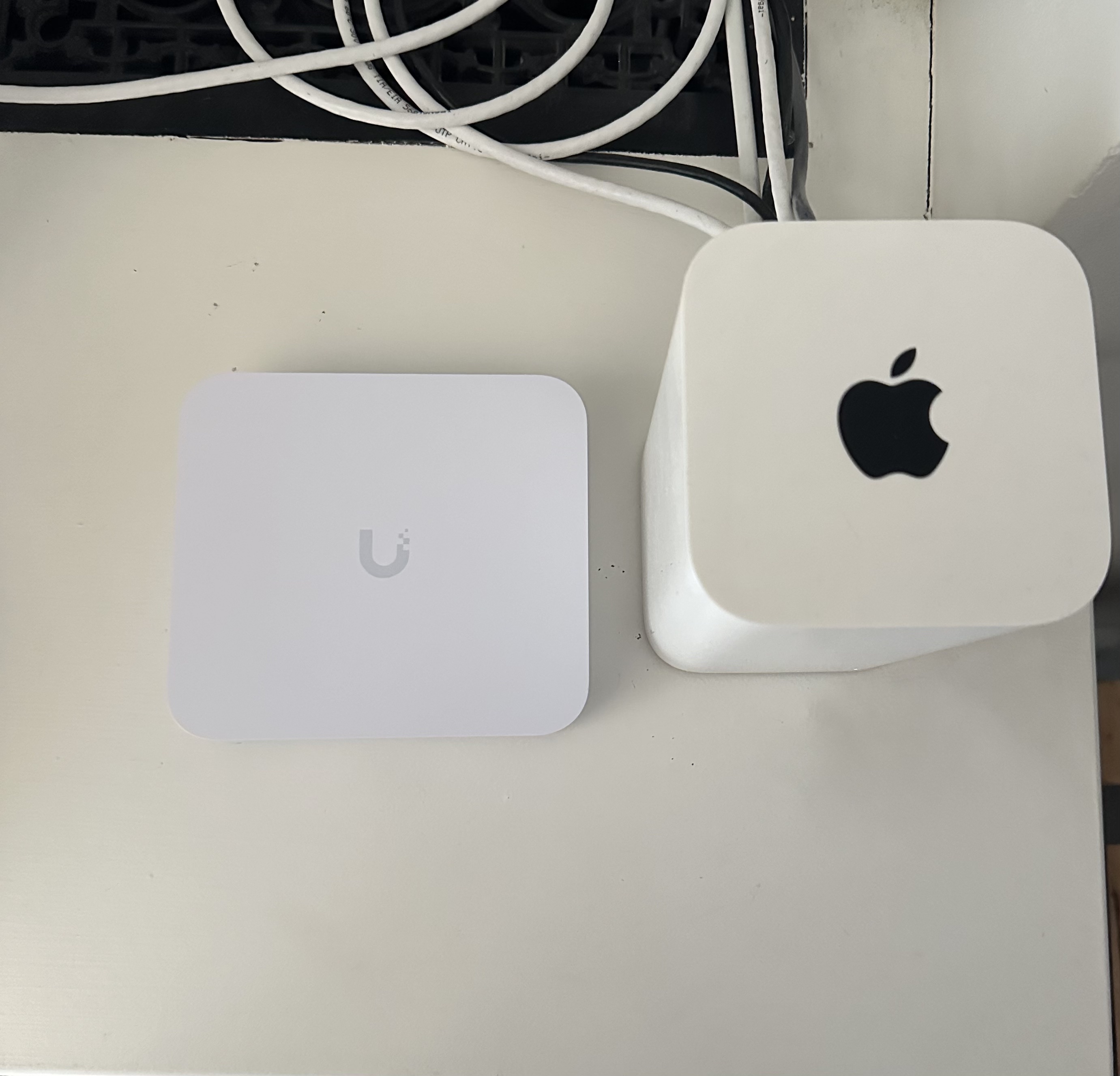Why I Switched from Apple AirPorts to UniFi: A Home Network Overhaul
 For the past decade, I’ve relied on an Apple Airport Extreme and an Airport Express to provide Wi-Fi throughout my apartment. However, technology—and my networking needs—have evolved significantly over these years. Initially, my setup was sufficient for basic internet usage, including a Nest thermostat, two computers, and a printer.
For the past decade, I’ve relied on an Apple Airport Extreme and an Airport Express to provide Wi-Fi throughout my apartment. However, technology—and my networking needs—have evolved significantly over these years. Initially, my setup was sufficient for basic internet usage, including a Nest thermostat, two computers, and a printer.
First Upgrade
After changing careers and having two people now working from home in 2020 the mesh network created by the airport extreme and airport express were no longer cutting it. The first upgrade I did was to buy MOCA adapters. For those unfamiliar they use your existing coax/cable lines and treat them like cat5. This mean’t I could now get much faster speeds at my desk. I hooked the express into an old switch I had and ran the line from the MOCA adapter into the switch. This meant my hardwired desktop now got 400+/MBPS and the express would now go from 10-11MBPS to 30-40MBPS. This should be closer to 100 but for some reason it just never really got there.
The Network Grows
From 2022-2024 my network started to grow as I added sensors and smart home hubs for new accessories. I now had two hubs going one working off wifi and the other wired in. This is the point at which it became clear there was a need to upgrade my home network.
Why Unifi?
I had admittedly been looking for a few years to upgrade, but most of the systems I looked at came with several drawbacks. Sure the new versions of the simple plug and play options like Eero and Eero pro exist, but they come with yet another subscription service. I was looking to avoid this and upgrade to something secure enough that it could handle a growing network of devices and something that could adapt over time. The ability to add or subtract from the network as my needs change is incredibly important.
Making The Switch
Ultimately, I chose the Cloud Gateway Ultra as my gateway due to its integrated 4 port gigabit switch and its 1 Gbps IDS/IPS capabilities. Ideally, the U7 Pro would have been my choice for an access point, but I opted for the U6 Pro instead due to convenience. This setup provides advanced security and networking capabilities without the need for a subscription service. If you’re looking to do a similar setup keep in mind you’ll either need a POE injector or a POE switch as well.
I planned the installation for a Saturday morning, giving myself a full weekend to address any issues that might arise before the workweek resumed. This timing proved to be a good choice, as setting up the basics, including several VLANs for different device categories, took over an hour. Perhaps those who install these on a regular basis can do this in 20 mins or so but if you’ve never done it before I recommend giving yourself plenty of time and prepare to find a few bumps along the way.
What I came to learn is that as much as I thought I was ready to make the step up to Pro level gear after wiring my own offices and homes over the years, there was a lot more to learn. I highly recommend this tutorial on doing just the most basic of things.
What Are The Results
Honestly, the immediate results after upgrading and setting up the basics were somewhat mixed. While the Wi-Fi speed in the immediate vicinity of the access point did see a slight increase over my old Apple Airport Extreme—gaining an additional 30-40 Mbps—it wasn’t the significant leap I expected after upgrading from decade-old technology. One setback I still need to solve is my Apple TV, which experienced a drop in download speed from around 96 Mbps(port limited) to about 35 Mbps, while upload speeds remained unchanged. Despite these issues, the download speed at my desk doubled compared to the performance of the airport express, although it’s still not up to my expectations. I’m considering adding another access point to see if it improves.
On a positive note, segregating my IoT devices onto a separate network proved beneficial. The UniFi software allows me to monitor in real time how often these devices connect and the volume of data they transmit home, features I believe more companies should implement. Additionally, I did have to set up a separate network for my older iPad which isn’t compatible with WPA3 security, a process that took just two minutes thanks to spending time in the morning learning how. I plan to share more of my thoughts after spending more time with the new setup.